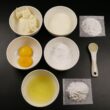They are essential ingredients that are added to food to extend the amount of time that they stay fresh.
Several types of food additives are used for various foods and purposes, such as enhancing the food’s texture, flavor, look, and taste.
To protect human health, food producers should normally utilize additives in moderation.
However, many food businesses and manufacturing facilities use more than is allowed to increase revenues and lengthen the final product’s shelf life.
You risk health problems if you don’t take safeguards while using these synthetic compounds. Below is a comprehensive list of the several types of food additives.
1. Sodium Benzoate
Acidic foods, including salad dressings, pickles, fruit juices, and condiments, are often preserved using sodium benzoate.
Although the FDA has usually deemed it safe, various studies have shown possible negative effects that should be considered.
For instance, research indicated that giving 3-year-old kids artificial food coloring and sodium benzoate enhanced their hyperactivity.
Another research found that among 475 college students, consuming more drinks with sodium benzoate was linked to increased ADHD symptoms.
Sodium benzoate may also be transformed into benzene, a substance that may be linked to cancer development when mixed with vitamin C.
The amount of benzene in carbonated drinks is the largest, and diet or sugar-free beverages are much more likely to generate it.
One research on benzene in various meals discovered samples of cole slaw and coke had levels exceeding 100 ppb.
This is over 20 times the EPA’s allowable contaminants threshold for drinking water.
Examine the food labels thoroughly to reduce your consumption of sodium benzoate.
A source of vitamin C, such as citric acid or ascorbic acid, should not be coupled with foods containing benzoic acid, benzene, or benzoate.
2. Artificial Sweeteners
Many diet foods and drinks use artificial sweeteners to increase sweetness while cutting calories.
Acesulfame potassium, sucralose, saccharin, and aspartame are common artificial sweeteners.
According to studies, artificial sweeteners may assist with weight reduction and blood sugar control.
Be aware that some people may have headaches from certain artificial sweeteners, such as aspartame, and some may be more susceptible to these effects than others.
Nevertheless, when used in moderation, artificial sweeteners are the types of food additives often regarded as safe for many people.
However, carefully read ingredient labels and restrict your consumption if you notice any ill effects after taking artificial sweeteners.
Artificial sweeteners could support weight reduction and glucose regulation.
Although certain varieties might have minor adverse effects, including headaches, they are usually harmless when used in moderation.
3. Artificial Food Coloring
Everything from candy to condiments may seem brighter and better, thanks to artificial food coloring.
However, there have been a lot of worries regarding possible health implications in recent years.
There are several ways to enhance the aesthetic appeal of your food, and one of the most popular methods is to use food coloring.
You could believe that only your children’s candy and breakfast cereals include food coloring. These food items are not the only ones affected.
You should examine the labels on your packaged foods since food coloring might be hidden among other ingredients.
Food dye usage has surged by 500% in the last 50 years. Most of the fast food you discover on the streets of your city is colored artificially.
Additionally, natural food coloring materials include colors of turmeric, coffee, chilly red powder, etc.
Furthermore, those with sensitive bodies may develop a number of medical conditions. Therefore, including a small quantity of artificial food coloring in your diet is fine.
While in general, you should avoid it since it contributes nothing positive to your diet regarding flavor or nutrients. This is one of the best types of food additives.
4. Guar Gum
A long-chain carbohydrate called guar gum is used to thicken and bind food.
It is a common ingredient in the culinary sector’s ice cream, salad dressings, sauces, and soups. Guar gum contains a lot of fiber and has many health advantages.
For instance, one research found that it reduced bloating and constipation, two symptoms of irritable bowel syndrome.
According to a study of three research, those who took guar gum with a meal reported feeling more satisfied after that and consumed fewer calories from afternoon snacks.
Guar gum may aid in lowering cholesterol and blood sugar levels, according to further studies. However, excessive guar gum use may be harmful to your health.
It may expand 10 to 20 times its original size, possibly leading to problems including esophagus or small intestine blockage.
In some people, guar gum may also result in minor symptoms like gas, bloating, or cramping.
Guar gum is one of the types of food additives that are still widely regarded as secure when used in moderation.
The FDA has also established tight restrictions on how much guar gum may be added to meals to reduce the possibility of unfavorable side effects.
5. Carrageenan
Carrageenan, derived from red seaweed, thickens, emulsifies, and preserves various food items.
Almond milk, cottage cheese, ice cream, coffee creamers, and dairy-free goods like vegan cheese are common sources of carrageenan.
Concerns regarding the safety of this common food ingredient and its possible negative effects on health have existed for decades.
One animal study revealed that exposure to carrageenan elevated fasting blood sugar and glucose intolerance, particularly when paired with a high-fat diet.
Studies on animals and test tubes have shown that carrageenan also causes inflammation.
Additionally, carrageenan has been linked to intestinal growth and ulcers and is believed to have a detrimental effect on digestive health.
According to single small research, patients in remission from ulcerative colitis who took a supplement containing carrageenan relapsed more quickly than those who received a placebo.
Unfortunately, there is currently very little information available on the effects of carrageenan, and further study is required to determine how it could influence people.
If you decide to restrict your intake of carrageenan, several internet tools may assist you in locating companies and goods that don’t contain carrageenan.
6. Yeast Extract
To enhance the taste of certain savory foods like cheese, soy sauce, and salty snacks, yeast extract, also known as autolyzed yeast extract or hydrolyzed yeast extract, is added.
It is created by mixing sugar and yeast in a warm atmosphere, centrifuging, and removing the yeast’s cell walls.
Glutamate is a sort of naturally occurring amino acid that may be found in many foods and is present in yeast extract.
Foods containing glutamate, like monosodium glutamate (MSG), may cause moderate symptoms in susceptible individuals, such as headaches, numbness, and edema.
Additionally, each teaspoon (8 grams) of yeast extract contains roughly 400 milligrams of sodium, which is significant.
It has been shown that reducing salt consumption will lower blood pressure, particularly in those with high blood pressure.
Although most meals only have a small quantity of added yeast extract, most people are unlikely to have any issues with the glutamate and salt in yeast extract.
The Food and Drug Administration still considers yeast extract safe as of 2017.
Consider reducing your use of processed foods containing yeast extract and increasing your intake of fresh, whole foods if you notice any unfavorable side effects. Yeast extract is one of the best types of food additives.
7. Trans Fat
Unsaturated fats that have undergone hydrogenation to lengthen the shelf life and enhance product consistency are known as trans fats.
Consuming trans fats has been linked to several negative health impacts, including diabetes, heart disease, and inflammation.
It may be found in various processed foods, including biscuits, microwave popcorn, margarine, and baked goods.
Trans fat consumption has been linked to a variety of possible health problems, and the FDA even recently opted to withdraw its GRAS certification.
Larger consumption of trans fats is particularly associated with an increased risk of heart disease, according to several research.
According to one research, consuming trans-fat-rich meals raised various inflammation-related indicators, one of the key risk factors for heart disease.
Additionally, studies suggest a link between trans fats and diabetes. The simplest and most efficient strategy to reduce your consumption of these types of food additives is to eliminate processed foods from your diet.
You may also make a few easy dietary changes, such as switching from margarine to butter and from vegetable oils to olive or coconut oil.
8. Xanthan Gum
One of the most common types of food additives, xanthan gum, is used to stabilize and thicken various foods, including salad dressings, soups, syrups, and sauces.
It may also be included in gluten-free recipes to aid with texture enhancement.
Xanthan gum has been linked to several health advantages. According to one research, eating rice with additional xanthan gum reduced blood sugar levels compared to eating rice without it.
Another research discovered that consuming xanthan gum for six weeks decreased blood sugar and cholesterol levels while boosting feelings of fullness.
Recent studies on the possible advantages of xanthan gum are still few.
Eating a lot of xanthan gum may cause digestive issues, including increased stool production, gas, and soft stools.
However, xanthan gum is often safe and well-tolerated by most people.
It’s advised to cut down on your consumption of xanthan gum or consider removing it from your diet if you encounter unpleasant side effects after consuming it.
9. High-Fructose Corn Syrup
Corn is used to make the sweetener high-fructose corn syrup. It may often be found in soda, juice, candy, morning cereals, and snacks.
It contains a lot of fructose, a form of simple sugar that, when ingested in large quantities, may negatively impact one’s health.
High fructose is one of the types of food additives that have been linked to diabetes and weight gain.
In one research, 32 participants drank a beverage for ten weeks that was either glucose or fructose-sweetened.
By the end of the research, the fructose-sweetened beverage significantly increased blood sugar levels, belly fat, and insulin sensitivity compared to the glucose-sweetened beverage.
Animal and test-tube research has also shown that fructose may cause cellular inflammation.
Heart disease, cancer, and diabetes are just a few chronic illnesses that inflammation is thought to have a major factor in.
High-fructose corn syrup also adds sugar and empty calories to meals that lack essential vitamins and minerals that your body need.
The best action is to avoid high-fructose corn syrup and sugary snacks.
Instead, choose complete, unprocessed meals free of added sugar and sweeten them with fresh fruit, stevia, or yacon syrup.
10. Sodium Nitrite
Sodium nitrite, often present in processed meats, prevents the development of germs while giving a salty taste and a reddish-pink color.
Nitrosamine is a substance that may have several harmful effects on health when nitrites are subjected to high heat and amino acids.
According to one research, consuming more nitrites and nitrosamine was linked to an increased risk of stomach cancer.
Additional research has also shown a connection between processed meat consumption and increased colorectal, breast, and bladder cancer risk.
Despite mixed results, several research has shown a connection between nitrosamine exposure and a greater risk of type 1 diabetes.
However, consuming as little processed meat and sodium nitrite as possible is advisable.
Try substituting unprocessed meat and wholesome protein sources for processed meats like bacon, sausage, hot dogs, and ham.
You may replace processed meats with various delectable high-protein foods, including chicken, beef, fish, pork, eggs, legumes, nuts, and tempeh.
11. Monosodium Glutamate (MSG)
MSG, also known as monosodium glutamate, is one of the types of food additives used to enhance and amplify the flavor of savory foods.
It may be present in many processed foods, including canned soups, frozen entrees, and salty snacks.
Additionally, it is often added to dishes in fast-food restaurants. Since 1969 research on mice revealed that excessive quantities had negative neurological effects and impeded growth and development, MSG has been the focus of intense debate.
The blood-brain barrier prevents this additive from entering the brain. Hence it is expected to have little to no impact on the health of the human brain.
Although other studies have shown no correlation, several observational studies have linked MSG use to weight gain and metabolic syndrome.
Nevertheless, some people are sensitive to MSG and may show signs like headaches, perspiration, and numbness after consuming much of it.
In one research, 5 grams of MSG or placebo were administered to 61 participants who said they were MSG sensitive.
MSG sensitivity may be a valid worry for certain individuals, given that 36% of participants exhibited an unfavorable response to MSG, whereas only 25% reported a reaction to the placebo.
It is advised to avoid MSG in your diet if you feel any terrible side effects after taking it.
Otherwise, MSG may be safely ingested in moderation without the danger of negative side effects if you can handle it.
12. Artificial Flavoring
Chemicals used in artificial flavors are made to taste like other components. They may mimic various flavors, including fruit, caramel, popcorn, and more.
According to research on animals, these artificial flavors may have some unsettling implications for health.
According to one research, rats given artificial flavorings for seven days had considerably less red blood cell formation.
In addition, it was discovered that specific flavors, like strawberry, chocolate, and biscuit, harmed the bone marrow cells.
Synthetic grape, plum, and orange flavors were shown to be hazardous to bone marrow cells in mice, according to the results of previous research with animals.
However, remember that the doses used in these experiments were far higher than what you may find in food.
Also, additional study is required to evaluate how artificial flavoring used in food may impact people.
Check the ingredients list on your food in the meantime if you want to reduce the amount of artificial flavoring you consume. This is one of the best types of food additives.








